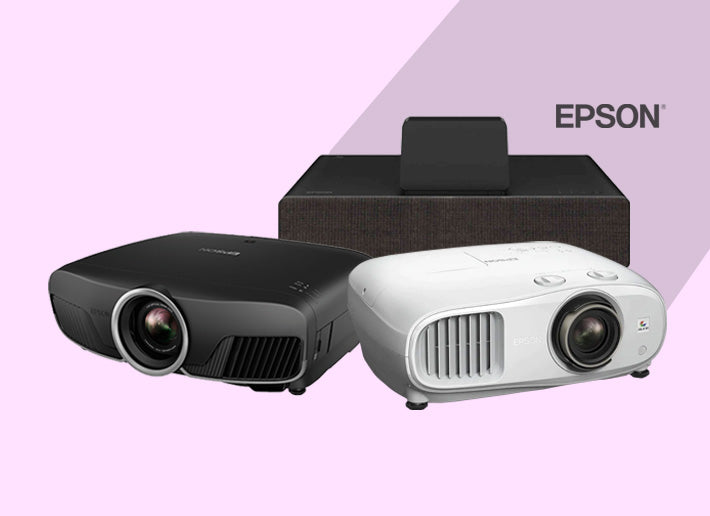We take you through the ins and outs of a modern surround sound setup, explain the current landscape and guide you through the process of building your own
Surround sound technology has evolved significantly over the years. Initially, formats like Dolby Digital and DTS 5.1 provided a satisfactory level of immersion. However, today’s systems including Dolby Atmos and DTS:X have revolutionised the experience by introducing object-based audio. Instead of restricting sound to specific channels, object-based formats allow audio engineers to place sound objects precisely within a 3D space, creating a more immersive and realistic sound environment.
With UHD video being more prevalent today than it was even a few years ago, audio quality is equally critical and needs to keep up. Several streaming services offer a large variety of content in 4K Ultra HD with Dolby Atmos or similar audio formats. A quality surround sound system allows viewers to hear every murmur, explosion, or rustle in the background as intended by filmmakers.
Moreover, with next-generation gaming consoles supporting high-end audio formats, systems must match the visual and interactive experience with rich, immersive sound.
Key Components of a Surround Sound System
Building a surround sound system starts with understanding its essential components. The AV receiver is the heart of the system, it processes the audio and distributes it to the speakers. It’s advisable to look for one that supports modern audio formats like Dolby Atmos and has enough power to drive all the speakers in your setup.
Image credit - Marantz
A traditional surround system includes front, centre, surround speakers and a subwoofer. More advanced systems add height channels to fully exploit Dolby Atmos or DTS:X. The quality of the speakers greatly affects the audio performance, so selecting the right ones is key. The subwoofer handles the low frequencies (bass), delivering rumbling explosions or deep musical tones. It’s essential for adding impact to action scenes or music.

Image credit - Dali
For those with space constraints, a soundbar with surround sound capabilities is a more compact solution. Modern soundbars, particularly those with upward-firing speakers, can replicate some elements of Dolby Atmos sound without needing a full set of speakers. Each component has a role in ensuring quality surround and it’s worth noting that different products suit different room sizes, usage preferences and budgets.
Image credit - Devialet
Customisability and Room Acoustics
While the components are important, how you configure them in your space is just as critical. The same speakers can sound vastly different in different rooms due to room acoustics. Room size, shape and materials all affect sound reflection and absorption. For example, a large, open-plan living room may need more powerful speakers or multiple subwoofers to achieve a balanced sound, while a smaller room could get away with a less powerful system.
Additionally, incorporating acoustic treatments like soundproofing panels or bass traps can help manage echoes, improve clarity and reduce distortion.
Wireless vs. Wired Surround Sound Systems
The debate between wireless and wired surround sound systems continues, with each offering distinct advantages. Wired systems are still favoured by audiophiles because they ensure the most accurate signal transmission with little risk of interference or dropouts. However, wired systems can be more cumbersome to install.
Modern wireless systems have come a long way in reducing latency and improving sound quality. They offer convenience, flexibility and ease of installation, especially for those who want to avoid cluttering their living room with cables. Products from Sonos and Devialet offer highly-rated wireless systems that are nearly indistinguishable in performance from wired setups, though some audiophiles may still notice subtle differences in high-end sound quality.
When deciding between wired and wireless, consider the trade-offs between convenience and absolute sound fidelity, depending on your priorities and living space.
Smart Home Integration
Today’s surround sound systems are becoming increasingly integrated with smart home ecosystems. Many AV receivers and soundbars now come with built-in voice assistants, allowing users to control their system with voice commands. In addition, systems can be linked with smart lighting and other home automation technologies to create a fully immersive home theatre experience. For example, imagine saying, "Alexa, play a movie" and having your lights dim, projector screen drop-down and audio system come to life, all in sync.
For smart home enthusiasts, compatibility with systems like Apple HomeKit, Amazon Alexa or Google Assistant is a key feature to look for when selecting surround sound equipment.
Modern Surround Sound Technologies
As home theatre technology advances, several cutting-edge solutions have emerged that optimise audio performance and improve user experience.
- Dante-based home theatres: Dante (Digital Audio Network Through Ethernet) is a networked audio protocol. It allows multiple audio channels to be transmitted over a single Ethernet cable, making it easier to set up multi-room audio without running dozens of speaker cables. This technology is particularly beneficial for complex setups in large spaces, as it offers flexibility and minimises signal interference.
- ART: Active Room Treatment dynamically adjusts sound output to suit the acoustics of your room. By utilising built-in microphones and sensors, ART detects acoustic anomalies in real-time—such as reflections or echoes—and actively compensates by adjusting the audio response. This is especially useful in rooms with challenging layouts or audio-reflective surfaces.
- DIRAC calibration: DIRAC’s Live Room Correction technology takes calibration to a new level by using advanced algorithms to measure and adjust the frequency response and impulse response of your speakers. This corrects acoustic issues like standing waves, phase alignment and speaker distances, ensuring sound accuracy and clarity across all frequencies. The output closely resembles the original audio recording, making DIRAC an excellent choice for audiophiles.
- Dolby Flex Connect: This innovative Dolby technology detects the position of each speaker by utilising room-mapping sensors and recalibrates the sound profile to provide an optimal listening experience, no matter where the speakers are positioned. It’s helps avoid the constraints of traditional speaker placement without sacrificing sound quality.
Also Read: Which is Better - Dirac or Dolby Atmos?
Recommended Surround Sound Setups
With a plethora of options on the market today, choosing the one that suits your style and space can be especially daunting. Often, a good place to start is by defining a budget and optimising the component mix to get the best value.
Here are some recommended surround sound setups at different price points.
- Entry-Level Setup: If you’re new to surround sound, consider a traditional 5.1 system with an affordable AV receiver. Brands like Yamaha and Denon offer budget-friendly solutions that still deliver impressive audio.
- Mid-Range Setup: A 7.1 or 5.1.2 Dolby Atmos setup with a receiver from brands like Denon or Marantz offers a great balance between price and performance, perfect for medium-sized rooms.
High-End Setup: For audiophiles, a full 7.2.4 Atmos system paired with high-end speakers from the likes of Bowers & Wilkins can transform any room into a state-of-the-art cinema. Additionally, adding separate amplifiers for the front speakers can significantly improve sound quality, especially for larger spaces.
In Closing
Surround sound has become a critical component in enhancing not just the viewing experience, but gaming and music listening too. Whether it’s the rich immersion of Dolby Atmos or the convenience of wireless systems, there’s no denying the value of upgrading to a high-quality audio setup. The right surround sound system elevates sound quality and transforms your living space into an immersive entertainment hub.
With options ranging from entry-level 5.1 systems to high-end Dolby Atmos configurations, finding the perfect setup depends on your space, budget and preferences. By understanding the key components and how they fit into the surround sound puzzle, you can make an informed decision that suits your needs. As new technologies continue to shape the future of sound, investing in a modern surround sound system will ensure your home is ready to deliver an unparalleled audio experience for years to come.
Explore our premium range of surround sound gear or get in touch for a bespoke solution. Our team of experts can help you get up and running in no time.









